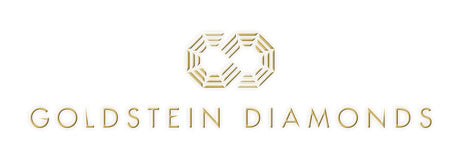Rolex is famous for making mechanically powered luxury timepieces. In the age of cheap digital watches, why would anyone want to spend thousands of dollars on a mechanical watch? Digital watches are more accurate, are able to have more features, almost like a miniature computer on your wrist.
You can buy a high-quality digital watch like a G-SHOCK by Casio starting at $99.00 up to the most expensive non-limited-edition G-Shock watch at $3,700. You could find a previously owned Rolex starting at $3,700, but a new Rolex is going to cost from $6,500 to $41,000, and even more for limited edition watches.
What makes them so desirable?
Rolex does everything imaginable to make the best possible mechanical watches. Rolex is so good at making watches, they do it when many people say we don’t need mechanical watches anymore.
The Rolex Company has been in business since 1902 and has a long history of making a watch that is not only able to withstand the rigors of life but is also a superlative timekeeper. With this kind of reputation, people are willing to spend more, in many cases, just for the name and what it represents.
A Rolex is more than just an accurate and dependable timekeeper, it is also gorgeous jewelry to be worn. Because of the quality of its designs, the rarity of its materials, and they last a lifetime, make a Rolex the most recognizable and one of the most sought-after luxury watch brands.
Factors Involved in The Cost of a Rolex
Prices of Rolex watches vary by model and by collections and there are many factors involved in the pricing. To start with, mechanical watch movements just cost a lot more to make than digital watches. There tends to be a high failure rate during manufacture and assembly because of the small size of most of the parts. Many of the parts are polished and finished by hand and the watches are assembled by hand.
Factor in the high labor costs in Switzerland and you can see the cost will be high. But $10,000 high? Here are more reasons that explain why Rolex watches can be so expensive.
Costly Materials
Rolex strictly chooses the materials used to make its watches. Each is meticulously selected and constantly re-evaluated to guarantee it performs as promised.
Oystersteel
To make sure a watch works perfectly and keeps its beauty in harsh environments, Rolex uses Oystersteel, an expensive steel alloy also used in high-tech, aerospace and chemical industries. Specific to the brand, it belongs to the 904L steel family, which has anti-corrosion properties comparable to precious metals providing an excellent sheen when polished.
Gold
Rolex uses only 18-carat gold, an alloy that is 750‰ (thousandths) of pure gold. Adding elements such as silver and copper produce the different types of gold used in the watch design; yellow, white and Rolex's exclusive pink gold alloy, Everose.
Rolex is the only watch manufacturer with an in-house foundry. This allows strict control of the production and machining of their gold to ensure quality and create the best-looking parts. Both the Oystersteel and the specially formulated 18-carat gold used are all developed and crafted exclusively by Rolex. While they have a few suppliers that provide steel, the steel is worked in-house to make all the parts.
Precious Platinum
Rare and more expensive than gold, platinum’s shine and brilliance is striking. Rolex uses 950 platinum, an alloy consisting of 950‰ (thousandths) of platinum. One of the densest and heaviest metals, it has exceptional corrosion resistance. Even though platinum is dense and heavy, it is elastic and highly malleable, which makes machining and polishing difficult. A lot of experience is required to master the art of polishing platinum.
To make the metal stronger while maintaining its luminosity, Rolex combines it with ruthenium, one of the platinum group metals, Ruthenium is an extremely rare and expensive, but Rolex goes to the extra expense to make sure the watch cases are extremely durable.
Precious Stones
On top of the expensive metals used in the construction of a Rolex are the jewels that adorn gem-set watch models. Rolex has an in-house gemology laboratory where experienced specialists check the quality of precious stones using state-of-the-art equipment. The gems are then delivered to the in-house master gem-setters who handset each diamond or precious stone.
Design cost is high
The high-quality materials used in the construction are indeed expensive, add to that, the high cost of in-house development costs in design and craftsmanship. Watchmaking is a demanding profession. It costs a lot to develop the design of the many complicated and small movements inside the watch. The outside design is equally important and their highly skilled craftsmen create timepieces that are also fine jewelry.
Assembly cost is high
When you buy a Rolex watch, you are paying for the time of the more than 6,000 workers. Rolex watches are made with hand-assembled and decorated movements which take a lot of time to complete. Some of their watches can take a year to complete.
Everything from Rolex movements to bracelets is assembled by hand, however, Rolex has some the most sophisticated and expensive watchmaking machinery there is. Rolex watch hands and other parts are set by hand by a trained technician, but a machine will help apply the exact pressure.
Human-operated robots and other automated machines are used for tasks such as sorting, filing, cataloging, and for delicate operations better for a machine to handle. All these machines and personnel to maintain them are another expense added to the production cost.
Rolex also has several of its own well equipped and highly professional Research and Development labs. They focus on developing even more efficient manufacturing methods and new techniques to make their products even better.
Their company is obsessed with ensuring each part of the process is performed as precisely as possible for the highest quality product, regardless of cost or the time needed.
This is why a Rolex is so expensive.


